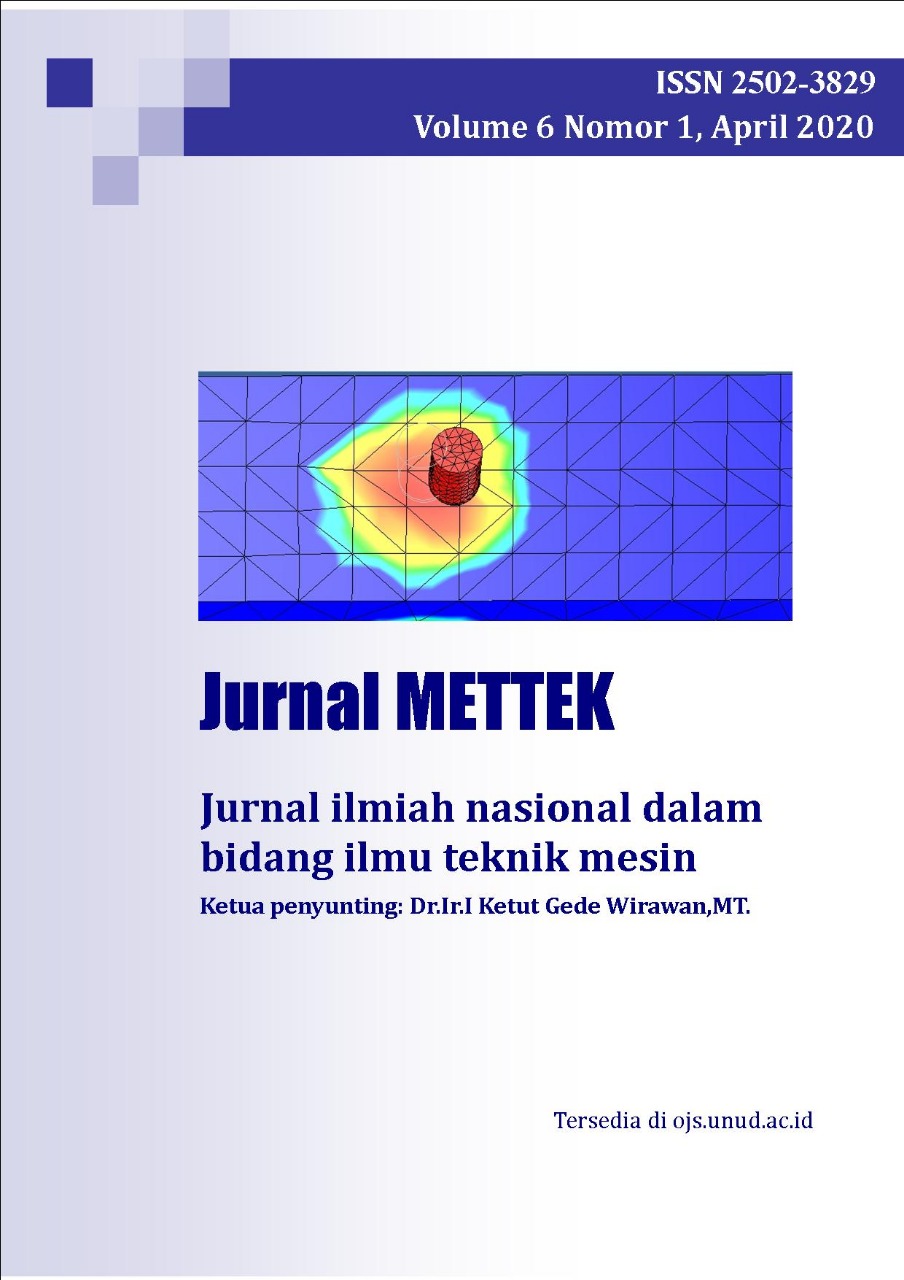Performansi Sistem Pengendali Kecepatan Motor BLDC Menggunakan Logika Fuzzy Logic
Abstract
Brushless DC motor adalah salah satu jenis motor sinkron yang diberi arus DC yang bersumber dari inverter atau power supply. Motor AC menghasilkan arus AC yang dapat menggerakan motor. Pada dasarnya kecepatan motor dapat di atur menggunakan kontroler yang menghitung seberapa besar keluaran yang harus dihasilkan. Pada umumnya input dari kontroler berupa tuas (naik – turun atau putar) dan tombol untuk input awalnya. Oleh Karena itu dilakukan penelitian untuk mengganti input yang mengatur kecepatan motor BLDC. Kontrol kecepatan motor BLDC berbasis logika fuzzy adalah suatu system kontrol yang mengganti input main stream dari kontroler menjadi sensor beban, dan dimana pembacaanya akan dikontrol oleh logika fuzzy untuk mengatur control kecepatan motor BLDC. Penelitian dilakukan dengan dua cara yaitu simulasi dan eksperimen prototype dengan pemberian beban pada sensor yaitu 10 kg, 20 kg, 30 kg, 40 kg dan 50 kg sebagai inputnya. Hasil dari pengujian dan penghitungan yang didapat pada setiap pembebanan menghasilkan kecepatan yang stabil yaitu rata – rata 0.25 detik dengan kecepatan yang hamper setara dengan referensinya. Error pada kecepatan yang dihasilkan antara simulasi dan prototype sangat kecil yaitu kurang dari 1% pada masing – masing pembebanan.
Brushless DC motor is one type of synchronous motor that is given a DC current from the inverter or power supply sourced. It produces an AC current that can drive the motor. Basically the motor speed can be set using a controller to compute the result of output. In general, the input from the controller is like a handle (up – down or twist) and a button for initial input. Therefore the research has changed the input that regulates the speed of the BLDC motor. BLDC motor speed is controlled based on fuzzy logic. Fuzzy logic is a control who help load sensor to replace the mainstream input like handle, and where the reader will be directed by logic to determine the speed of the BLDC motor. The research is carried out in two techniques, called simulation and experiment. The prototype is testing with the load on 10 kg, 20 kg, 30 kg, 40 kg and 50 kg as an input. The results of the tests is obtained at each loading resulted in a stable speed which is an average of 0.25 seconds with a speed that is almost the same as the reference. The error signal of the speed is produced between the simulation and prototype is very small, which is less than 1% in each load.
Downloads
References
[2] Bambang Sujanarko, BLDC Motor Control for Electric Vehicle Based On Digital Circuit and Proportional-Integral Controller, International Journal of Advanced Research in lectrical, Electronics and Instrumentation Engineering (An ISO 3297: 2007 Certified Organization) Vol. 3, Issue 9, September 2014
[3] Agung Dwi Yulianta, Sasongko Pramono Hadi dan Suharyanto, Pengendalian Kecepatan Motor Brushless DC (BLDC) menggunakan Metode Logika Fuzzy, Jurnal Sains, Teknologi dan Industri, Vol. 12, No. 2, Juni 2015, pp.248 – 254
[4] Timothy J. Ross,Fuzzy Logic with Engineering Applications 3rd Edition, John Wiley & Sons, Ltd, 2010
[5] C. Gencer and M. Gedikptnar, Modeling and Simulation of BLDCM Using MATLAB/SIMULINK, Journal of Applied Sciences 6 (3), 2006, pp.688 – 691
[6] K. Neethu, M. Boopathi, GirirajMannayee and T.C. Kanish, Fuzzy Logic based Speed Control of BLDC Motor on Sensorless Technique for Space Application, Indian Journal of Science and Technology, Vol. 9 (27), July 2016
[7] Jahir Abbas Mullick, Fuzzy Controller for Speed Control of BLDC motor using MATLAB, International Research Journal of Engineering and Technology (IRJET), Vol. 04 Issue: 02, February 2017

This work is licensed under a Creative Commons Attribution-NonCommercial-ShareAlike 4.0 International License.

This work is licensed under a Creative Commons Attribution-NonCommercial-ShareAlike 4.0 International License.







